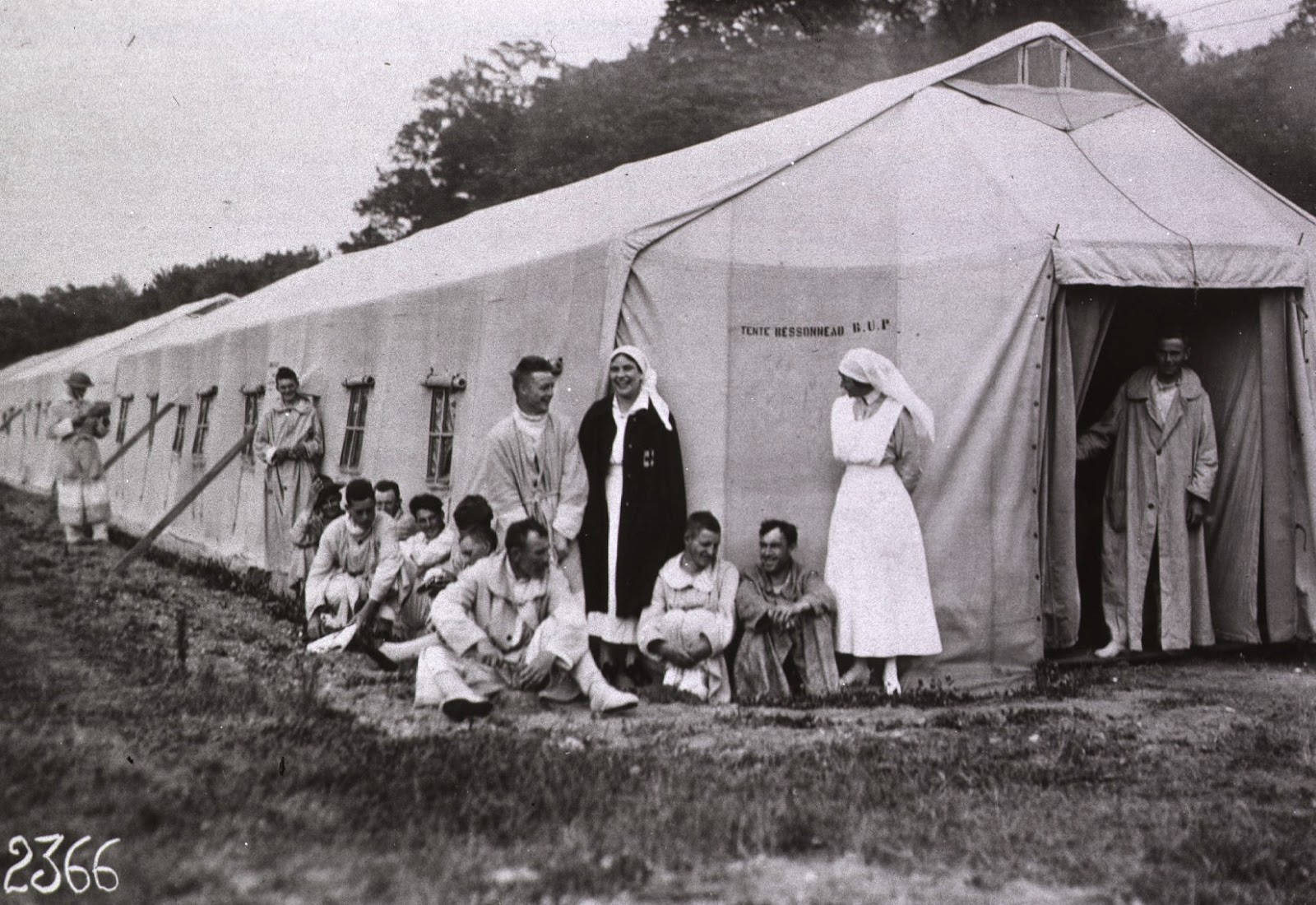When they arrived at Bazoilles-sur-Meuse in July 1918 administrators first tapped Leverman to help with surgery at the neighboring Base Hospital #18 from Johns Hopkins University. This brought her directly to the realities of the conflict. There I "for the first time looked upon the victims of this horrible conflict," she noted. "For two longs days I helped the Ward Surgeon with what seemed an endless changing of bandaging of such ghastly sloughing wounds, that it made one wonder: How can they bear it? And this was only the beginning of what I was to see later on." (1)
Nurses were needed closer to the battlefront given the heat of battle and the many casualties that summer and fall. Eight nurses left Base Hospital #46 and traveled as front line and evacuation hospital nurses thereafter.
Leverman's first days were filled with cleaning and medical work and travel in quick succession. She and the nurses arrived at Chateau Thierry, one of the fiercest of battle locations and set up at a chateau about two kilometers from the city. In her memoir Leverman reprinted the letter of commendation she received for her work there, with evident pride in the recognition of their work. Colonel David Stone praised the work of the nurses: "The building at Chateau Thierry selected for use as a hospital was the best one available but was full of rubbish, dirt, and debris. You and the other nurses pitched in and in a short time this was all cleared away, and the floors, etc. cleaned and the buildings ready to receive the wounded. Then when the wounded commenced to arrive the report states how tirelessly and skillfully the nurses worked assisting the surgeons through long hours at the operating tables, and in caring for the wounded in the various wards, especially the seriously wounded." (2)
One of Leverman's most descriptive passages about the specifics of military nursing concerned her experiences in the wake of the St. Mihiel offensive in the middle of September, 1918:
"A number of the tents were also set up and one of the large Besson[n]eau type was fully equipped for operating; containing eight tables for that purpose, with two extending the entire length on one side to be used for sterile supplies." (3-4) The Bessonneau type tent, pictured here, was set up with a frame, canvas, and windows for ventilation. Leverman indicates that beside this large operating tent two others were set up for the sterile supplies needed for surgery.
 | |
| American Red Cross Hospital No 5, Auteuil, France, with Bessonneau Tent. US National Library of Medicine http://ihm.nlm.nih.gov/luna/servlet/detail/NLMNLM~1~1~101404813~138674:U-S--American-National-Red-Cross-Ho |











